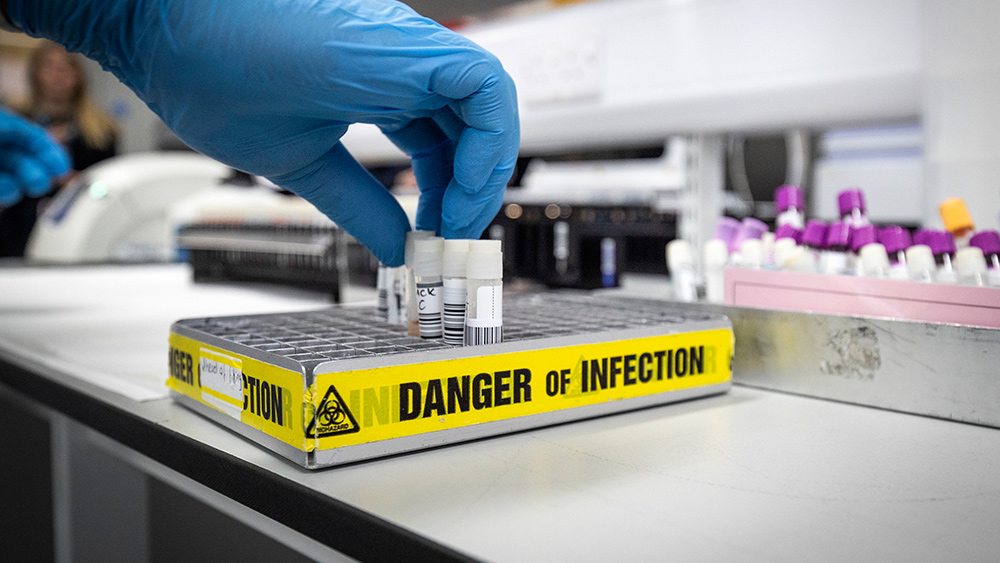Some bacteria can go into a “zombie” state to survive starvation
07/07/2019 / By Edsel Cook

A common species of bacteria demonstrated the ability to assume a “zombie” state when faced with inhospitable conditions. This survival strategy might explain why other microorganisms still reappear despite seemingly getting eradicated by antibiotics, starvation, or other factors.
Formally called “oligotrophic growth,” the state differs from normal dormancy. The bacteria remain active, but their cellular processes slow almost to a crawl.
Although simple unicellular organisms, bacteria possess a lot of complicated abilities. For example, many strains respond to harsh living conditions by forming an endospore around the bacterial body.
A coat made of durable materials, the endospore provides protection against antibiotics, cold temperatures, ultraviolet light, and other external factors that may harm or kill the bacterium.
Within the protective confines of the endospore, the bacterium enters a dormant state that doesn’t expend energy or needed nutrients. It remains asleep until its surroundings become more benign. Upon sensing a safer environment, the microbe emerges from its spore.
The ability to form endospores allows disease-causing bacteria to survive antibiotic treatment. A bacterial infection might subside after a patient took antibiotics, but the disease can return once the remaining microorganisms come out of their spores and begin increasing in number. (Related: Scientists study efficient photosynthetic bacteria to boost crop yields.)
Bacteria may enter a zombie-like state
Overseen by the University of Amsterdam professor Leendert Hamoen, an international team of researchers studied Bacillus subtilis. A benign strain of soil bacteria, B. subtilis is often used as a model organism.

The researchers picked a mutant variant that lost the ability to form endospores. As a result, they couldn’t retreat into a dormant state when faced with deadly conditions.
For their experiment, the researchers starved the B. subtilis variant and took note of the results. To their surprise, some bacteria survived the lack of food for long periods.
Deprived of nutrients and unable to form protective endospores, the bacteria used a different method to protect themselves. They throttled down cellular processes to low levels but didn’t completely shut down.
“We saw clear differences between the active state, the dormant state and this state,” explained Hamoen. “Normally, Bacillus is rod-shaped; but the starved bacteria shrank until they were almost spherical.”
Dormant bacteria enclosed within their spores did not display any signs of activity. But the mutated B. subtilis continued those activities at much slower speeds.
The B. subtilis variant underwent cell division once every four days. In comparison, a normal bacterium reproduces once every 40 minutes.
Oligotrophic growth
In the research paper published in the science journal Nature Communications, the team described this capability as oligotrophic growth. The zombie-like state allowed B. subtilis bacteria to continue growing in nutrient-poor conditions.
“The big question now is: do bacteria other than Bacillus know this trick too?” Hamoen brought up. “If so, this fundamentally changes our outlook on bacteria.”
Experts previously thought that bacteria relied on spores to protect them from antibiotics. But the act of creating an endospore uses up a lot of energy. A nutrient-starved bacterium might not be able to pay that steep initial cost.
Furthermore, bacteria are not guaranteed to emerge from their spores. Going into a dormant state is a risky option, although it is still better than perishing outright.
In contrast, bacteria entered and exited oligotrophic growth with much greater ease. The microbes also had an easier time producing new colonies after ending the zombie state.
B. subtilis was the first strain confirmed to undergo oligotrophic growth. If other bacteria possess this ability and use it to survive antibiotic treatment, researchers may need to reconsider the conventional treatment for recurring bacterial infections like cholera.
Sources include:
Submit a correction >>
Tagged Under:
bacteria, breakthrough, cool science, discoveries, Microbes, Microbiology, microorganisms, oligotroph, oligotrophic growth, research, scientific, weird science, zombie bacteria, zombie cells, zombie state
This article may contain statements that reflect the opinion of the author




















